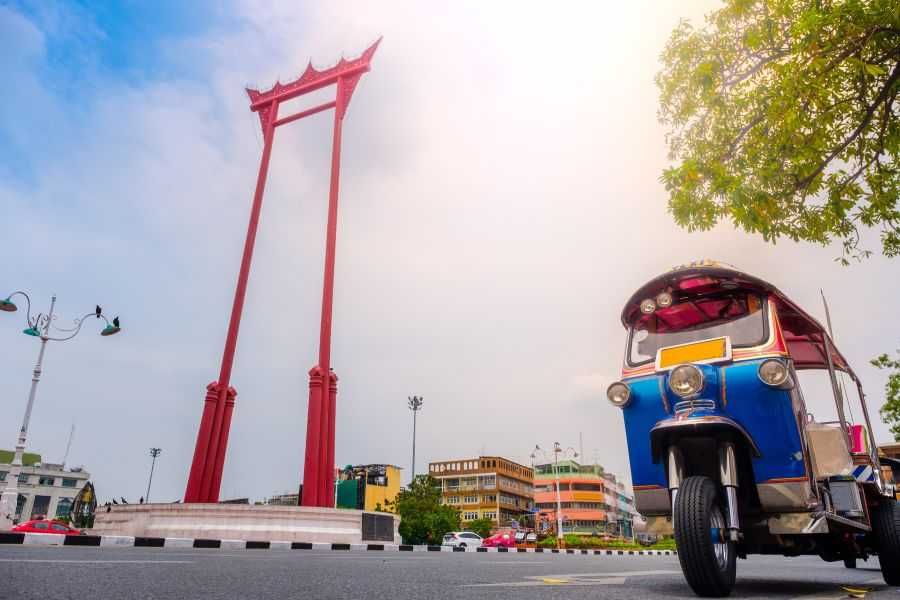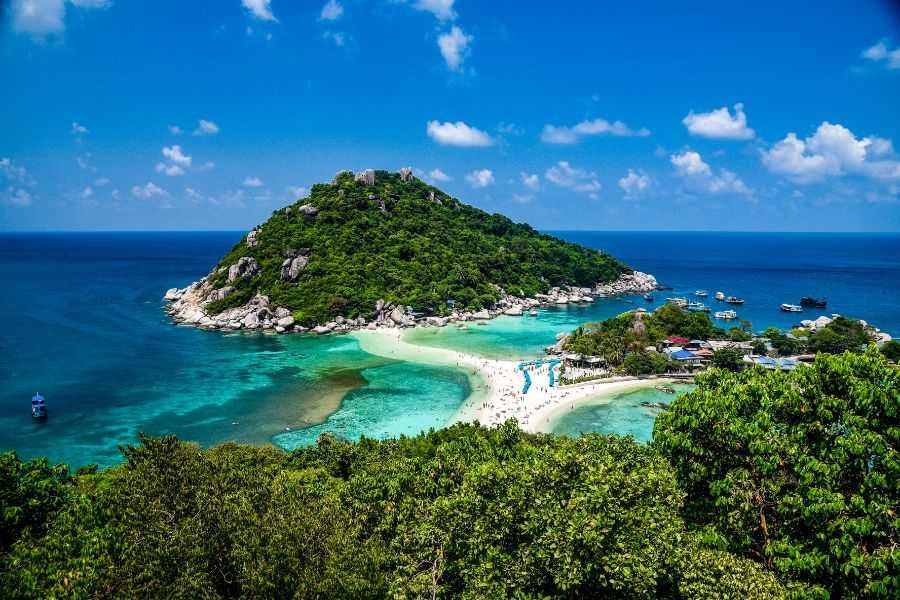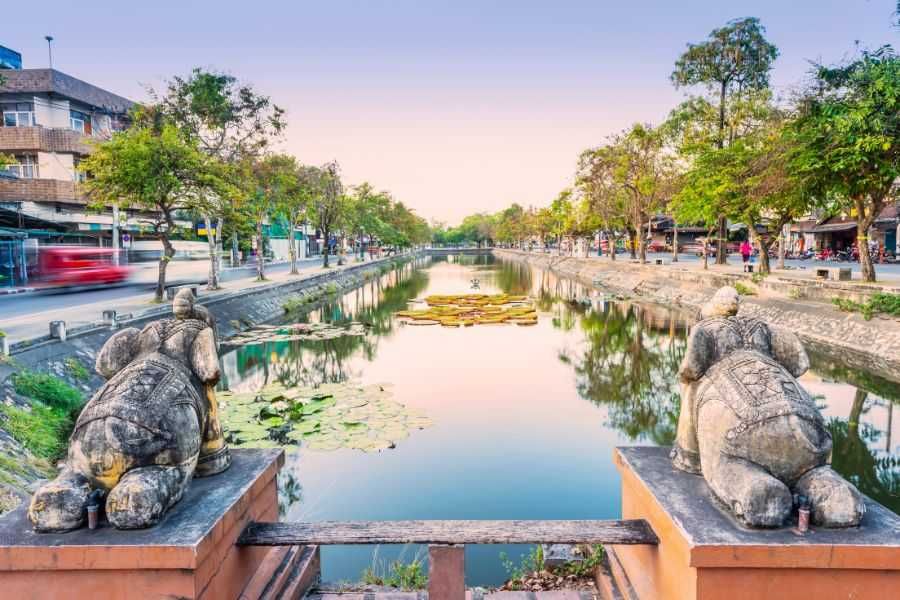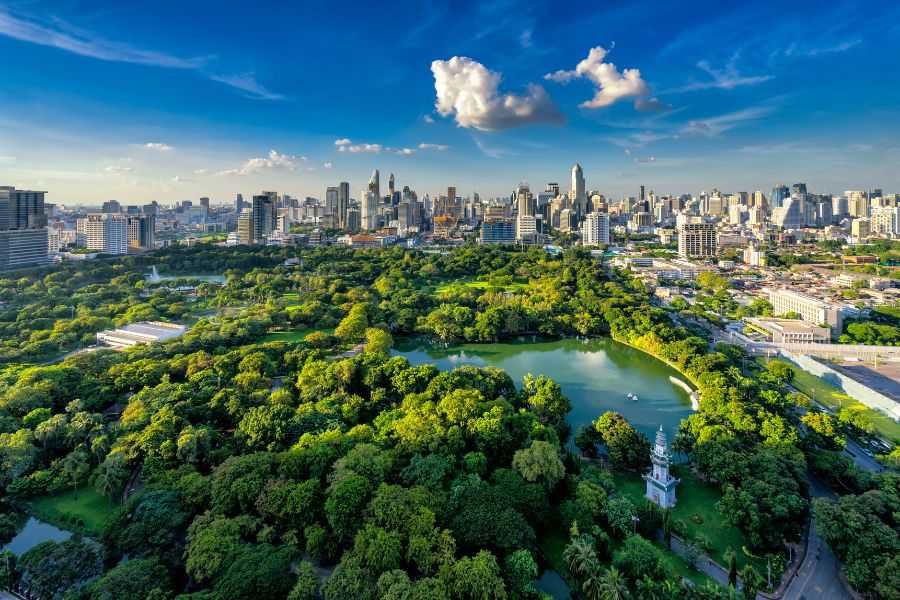Share This Article
Best time to visit Thailand: A Guide to Each Area
Known as The Land of Smiles, Thailand is an alluring destinations that travelers tend to keep on their travel bucket-list. Now that Thailand has fully opened its border to welcome international travelers after months of COVID-19 restrictions, it is the perfect time to plan your dream escape to this extraordinary land. Similar to other countries in the Southeast Asia region, the country has a tropical climate, meaning that there are different seasons with different weather patterns. For a perfect vacation to this tropical paradise, we recommend planning ahead your prefered destinations and researching weather conditions. Continue reading to learn about the best time of the year to visit Thailand!
When is the best time to visit Thailand?
Given that Thailand has a longitudinal extent of 1650 km, it is not surprising that the weather varies from one place to another.
Most of this nation is located in an area with a humid, tropical climate with monsoon air circulation. The Malay Peninsula or southern Thailand both have tropical climates.
In Thailand, there are three seasons:
- Arid and hot (from March to May) - Extremely hot weather without any rain
- Hot and muggy with high temperatures and showers (June to October)
- Dry and warm (from November to February) - Low temps and minimal precipitation. Tropical regions typically has afternoon rains that last an hour or two.
The Korat Plain has the least amount of rainfall. In its western region, there is an annual rainfall of about 500 ml. These levels reach 1000 mm in other areas. Rainfall totals range from 1,300 mm in the Manamu Lowland to 4,500 mm on the west coast. In the highlands, it may rain up to 5,000 mm.
When is Thailand's weather at its most favorable? The most stunning months are November through February. This is the ideal time to go sightseeing and unwind on the beach because there is little rain and it is comfortably warm. The hottest month is April (which is particularly noticeable in the country's center), and the coldest month is December. The hot and humid season, which lasts from June to October, is when you can expect the worst weather in Thailand. There is also a lot of rain during this time.


Specific suggestions for each region to travel

In addition to having a very diversified terrain, Thailand's northern area also has a very diverse climate. The climatic conditions vary based on the locations you want to visit. Therefore, we recommend checking the weather forecast of the specific destination you're visiting. In general, from November to February, it is the coldest (28 to 32 degrees Celsius), while from March to April, it is the hottest (stuffy and steamy) (air temperatures reach 40 degrees Celsius).
Chiang Mai is the biggest city in northern Thailand. It is worthwhile to stop at temples like Wat Chiang Man, Wat Chedi Luang, or Wat Chiang Lam while you are in the area.
In Northern Thailand, you can expect lovely sunny weather with little rainfall from November to May or June. Every month, the temperature rises, and between March and May, mercury bars can reach a maximum of 40 °C. The temperatures increase with proximity to Thailand's geographic center.
March is the sunniest month. August can have up to 22 wet days, which is when rain season comes in full force.
Planning a trip to Thailand?
Leave your worries behind and leave the planning to us. Your dream holiday is just one click away!

Bangkok, Thailand's capital and largest city, is situated in the country's center. The area is abundant in reserves and national parks, such as Ramkhamhaeng National Park. What else in the area is interesting to see? The Nakhon Sawan Temple Complex, Sukhothai Old Historical Park, and of course the numerous temples and sights in Bangkok, which we have more information on here.
One of the warmest parts of Thailand is the center. The yearly average for air temperature is 34 degrees Celsius, and there is a lot of humidity in the atmosphere. Normally, the water's temperature ranges around 28 degrees Celsius.
April, when air temperatures are around 35 degrees Celsius, is the hottest month in Bangkok. The coldest month is December, yet even then, temperatures can reach 27 degrees Celsius.

In the center of Thailand, the rainy season typically lasts from May through July. The rain starts as light but gets heavier every day. Downpours can last up to 2 hours. However, the sky will clear out and you can resume your traveling activities like usual. There are 28 to 35 degrees Celsius in the air on average. It gets a little cooler in October and November, and this weather pattern typically lasts until January. Around 26 degrees Celsius is the range of the air temperature.
Remember to pack a warm sweater or sweatshirt because Bangkok can be chilly in the evenings. It will come in handy when you go for a nighttime stroll around the city.
Would you like to know more about this part of Thailand? Write to us!
Eastern Thailand is home to many monuments and stunning landscapes. Islands including Koh Samui, Koh Tao, and Phangan may be found in this region of the nation. The major cities in the area are Khorat, Loei, Udon Thani, and Mukdahan, which are renowned for their unique architecture.
What sights are worth viewing in Thailand's eastern province? Definitely the Friendship Bridge, Phu Kradung, Phu Rua, and Tham Erawan - Elephant Cave national parks.


For Thailand's east coast, we recommend December to February. This is the time of the year when temperature is pleasantly warm and rainfall is also infrequent. The weather is ideal for sightseeing, water sports, and beach relaxation. The hottest air temperatures, which can reach 35 degrees Celsius, fall in April and May.
June marks the start of the normal rainy season. Initially brief, they grow longer and more intense with each passing day. Rainfall can get quite heavy and air humidity is high in July and August. It's about 30 degrees Celsius outside. Between October and November, eastern Thailand experiences its greatest rainfall.
The Andaman Sea and islands like Phuket, Koh Lanta, Koh Phayam, Khao Lak, Ranong, and Koh Phi Phi—one of Thailand's most stunning and well-known islands—as well as magnificent Krabi are all part of the West Coast. In this section, we'll highlight a few of the unique attractions and various diving opportunities that these places offer in addition to their stunning scenery, white beaches, and turquoise ocean.
We cannot talk about Western Thailand without mentioning Khao Sok National Park - a 739-square-kilometer park located in the Surat Thani province of Thailand. It is a popular choice for hiking provided its thick jungle. Khao Sok is considered one of Thailand's wettest regions. The heaviest rainfall occurs during the months of May to October. However, the park is still an ideal destination to visit during the wet season with its verdant landscape and diverse wildlife.


Phuket and Koh Lanta
The dry season, from November to March, is the best time to visit Phuket and Koh Lanta. During this time of the year, the weather is cooler and less humid, with temperatures ranging from around 26 to 32 degrees Celsius. The area also features windy breeze that can help relieve the tropical heat, making it even more ideal for vacations.
The monsoon season starts at the end of May and lasts until October. The period from mid September to mid October usually observe the heaviest rainfall.
In conclusion, Thailand is worth visiting year-round, and you only need to keep in mind that some locations can experience rainfall at some periods during the year. However, don't let the rain dampen your spirits! There is a special beauty in seeing the authentic local lifestyles and magical landscapes in the rain. There are also various monuments, attractions, and activities for you to enjoy when it rains, so you will never get bored here. You can also refer to our Rainy Day Tips to know what to prepare for your trip to Asia!
No matter the weather, Thailand is always a good choice. Join us for 3 unforgettable days in Bangkok, Kanchanaburi, and Ayutthaya to discover some of the most outstanding spots of Thailand!



